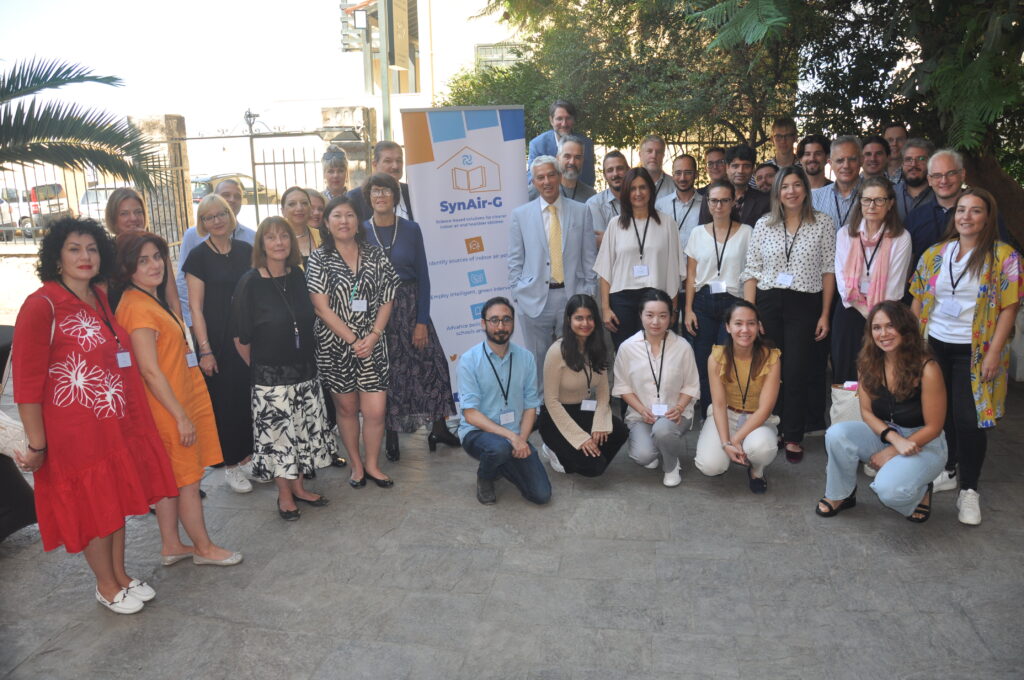On 7 and 8 October 2024, the SynAir-G project consortium gathered in Athens (Greece) for the second annual General Assembly, hosted by the National and Kapodistrian University of Athens.
During the Annual General Assembly, all project partners came together to review progress, share updates, and plan future activities. Detailed reports from each work package (WP), including milestones and preliminary results achieved, challenges faced, and next steps were presented and discussed.
Of particular development to be highlighted is that the SynAir-G consortium is on the right track with the successful installation of advanced technical equipment in selected classrooms to monitor air quality and detect potential pollutants and allergens. This includes high-tech sensors for measuring chemical pollutants, as well as innovative devices that track allergens and viral particles in the air. These systems are designed to work continuously, providing real-time data to help understand the indoor air environment better. Data collection is already underway, and this information is being used by the consortium to improve sensor performance and develop models that predict pollution levels and air quality trends. This work is a crucial step toward creating healthier environments for students and staff in classrooms.
Furthermore, topics such as project management, communication strategies, data management, and exploitation plans were also reviewed to ensure alignment across all partners. Additionally, strategic decisions regarding the project’s direction, such as timeline adjustments, were made in collaboration with all partners. The assembly fostered collaboration, ensured accountability, and set the course for the next phase of the project.
The meeting was chaired by Prof. Nikolaos G. Papadopoulos, SynAir-G Coordinator, and the different work packages and tasks leaders provided comprehensive updates on the progress made over the past twelve months and outlined their action plans for the upcoming period.
Stay tuned for further information about the SynAir-G project. Follow us on Twitter and LinkedIn, and subscribe to the SynAir-G Newsletter!

